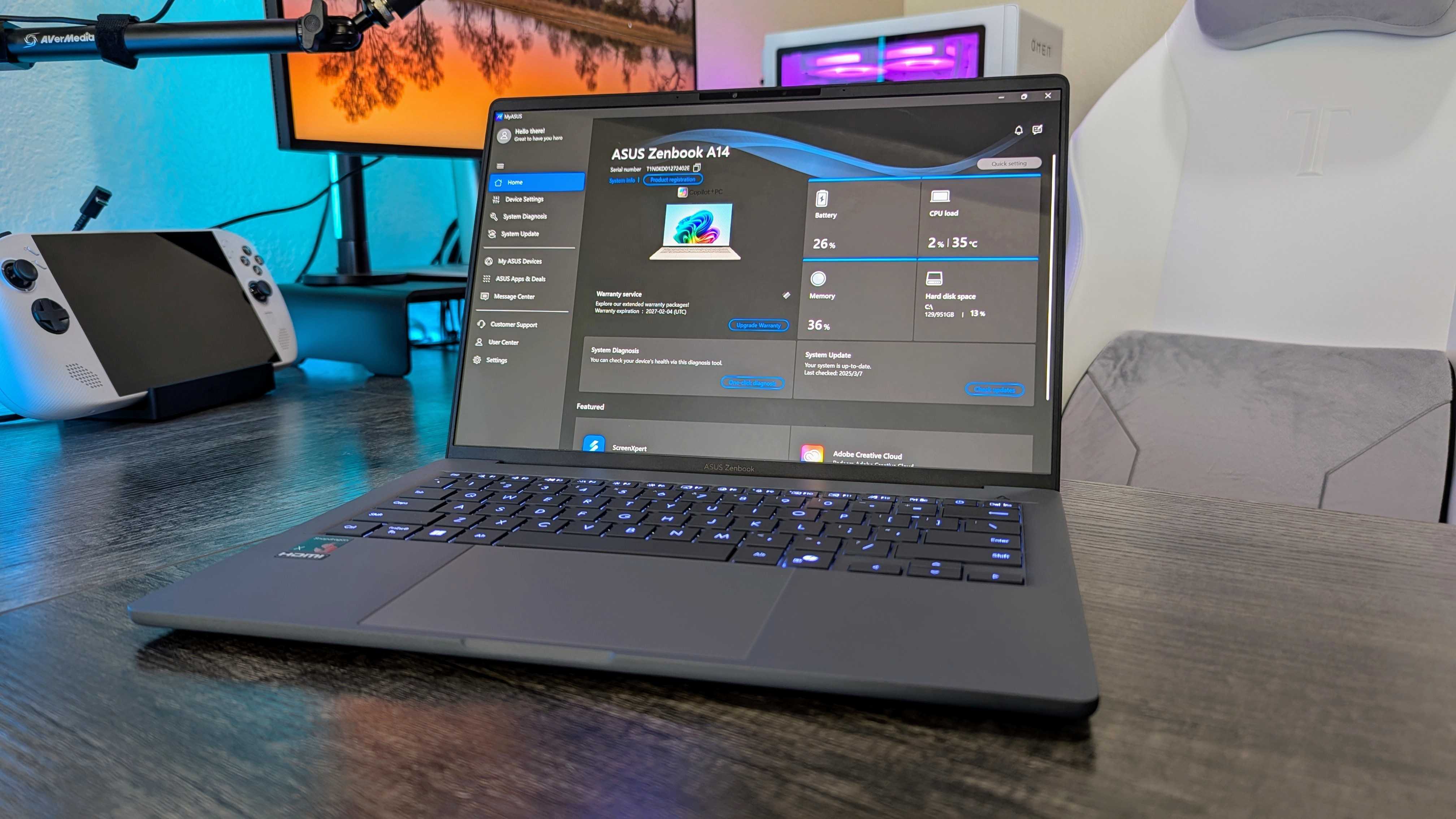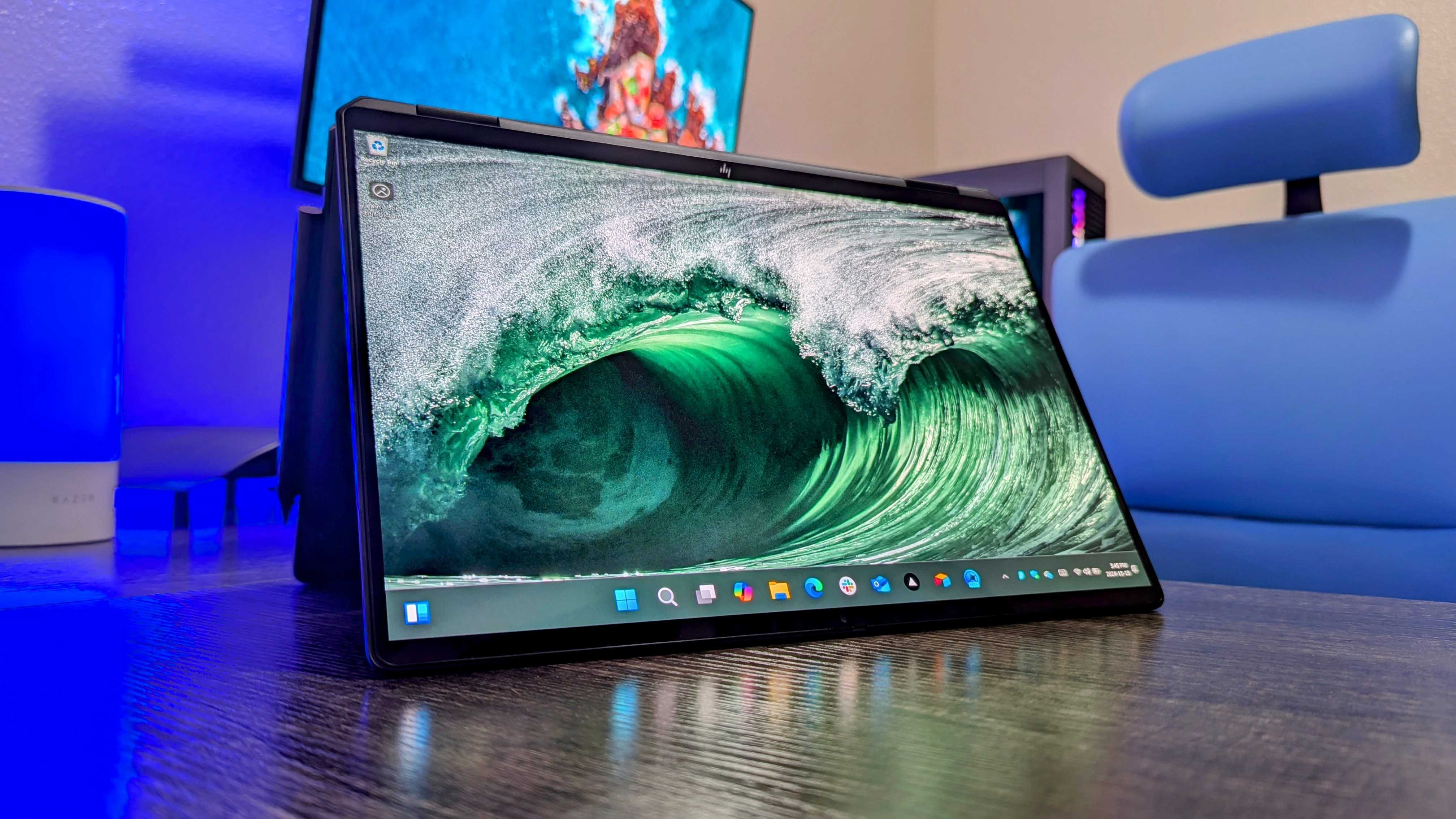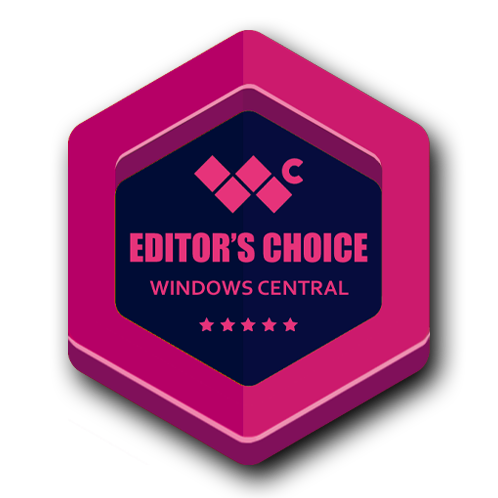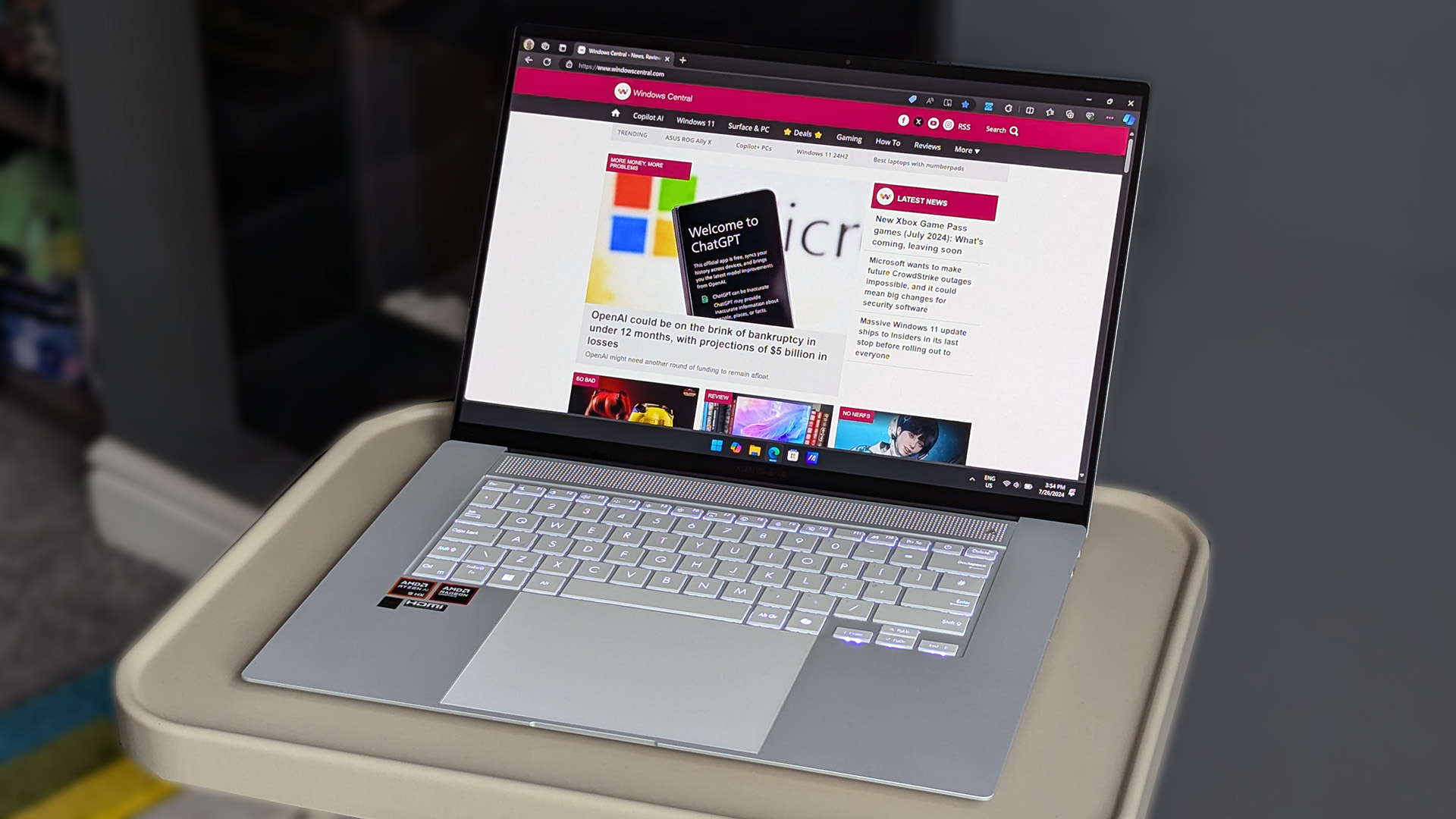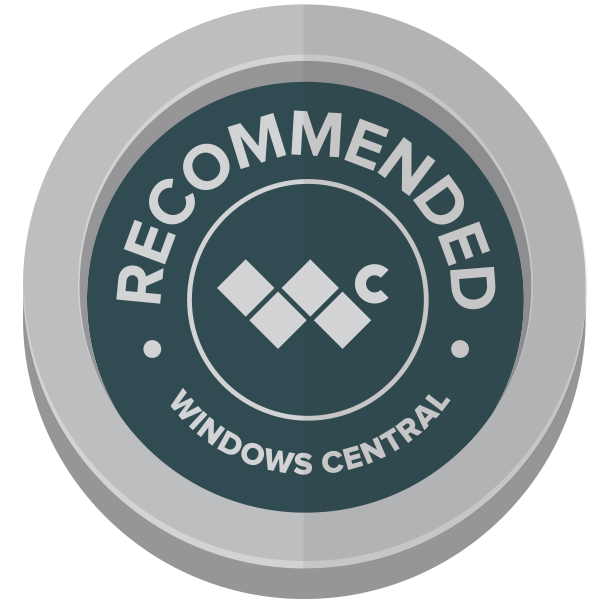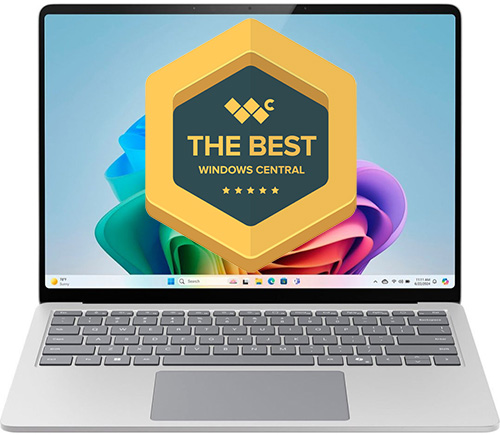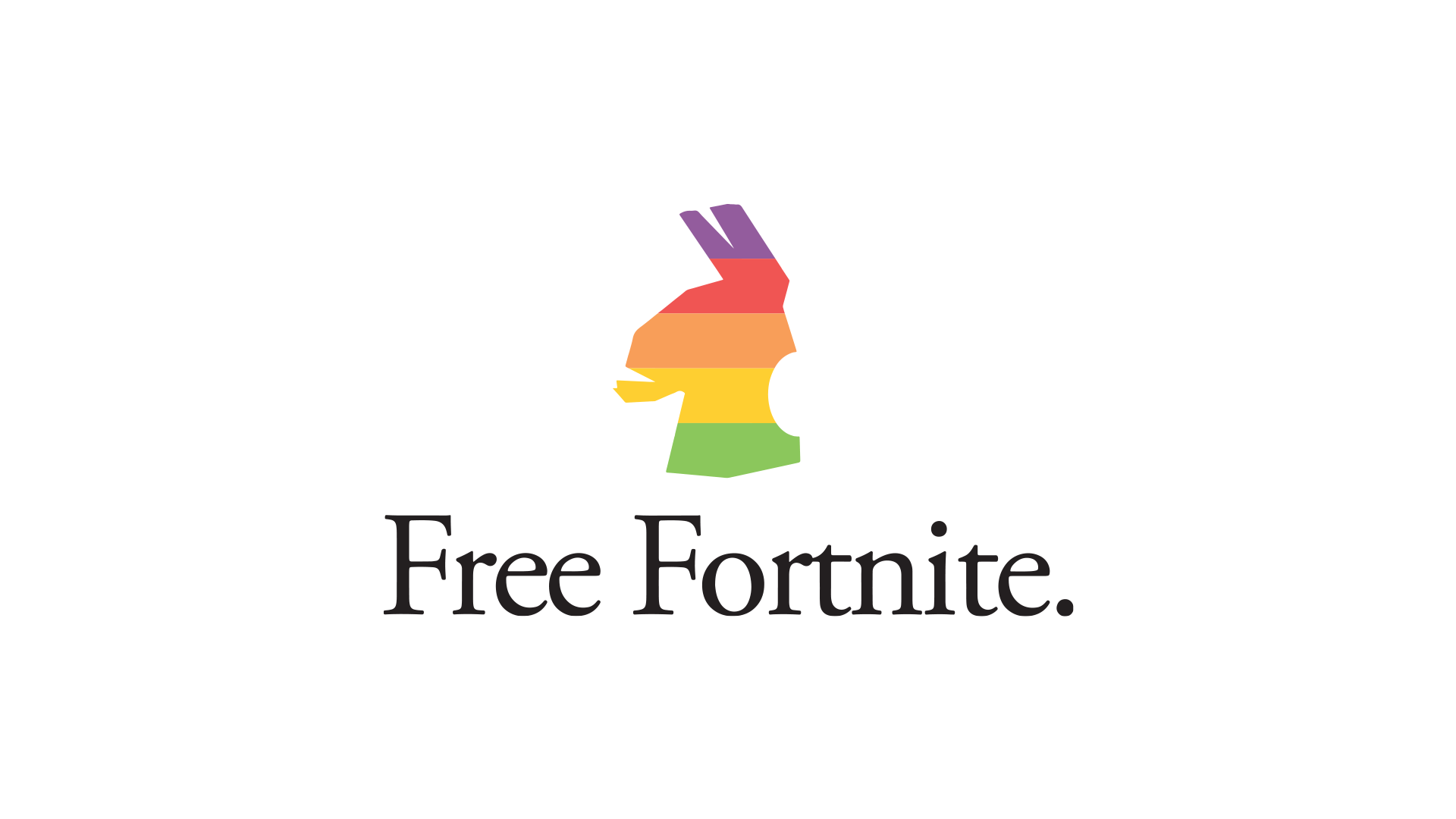Best Copilot+ PCs in 2025: Top-rated AI laptops with Qualcomm, Intel, and AMD chips
Copilot+ PCs are laptops that allow you to take full advantage of Microsoft's AI tools in Windows 11, and these are the best we've tested.

Copilot+ PCs take the idea of AI PCs one step further by offering exclusive access to AI tools built into Windows 11. With all major laptop brands offering great Copilot+ laptops with Qualcomm, AMD, and Intel hardware, it can be tough to figure out exactly what you need.
Windows Central's PC review team has spent hundreds of hours testing 19 Copilot+ PCs, and I've narrowed the list down to six top options for a wide range of users.
My top pick for most people is Microsoft's Surface Laptop 7, but my selection of top-rated alternatives and honorable mentions might have something better suited to your specific needs.
With Amazon Prime Day (July 8 - July 11) and competing sales from other major retailers already started, I've noted any major discounts spotted during my most recent update.
July 2, 2025: Amazon Prime Day is set to run from July 8 until July 11, and I'm expecting to see plenty of deals on Copilot+ PCs. You'll probably have better luck shopping at competing sales from Best Buy, Newegg, Walmart, and Target, and I've noted any deals that are already live a week ahead of the main event. — Cale Hunt
Best Copilot+ PCs we've tested in 2025
Why you can trust Windows Central
Savvy shoppers might notice that a lot of my top Copilot+ PC picks mirror those found in my roundup of the best AI laptops. Yes, Copilot+ PCs are all AI laptops, but the reverse isn't always true.
For example, the ASUS ROG Zephyrus G14 that I selected as the best 14-inch gaming laptop option in my other roundup is considered an AI PC thanks to its Ryzen NPU and NVIDIA RTX Laptop GPU.
However, the NPU's 16 TOPS capacity doesn't hit the 40+ TOPS requirement for Copilot+, barring it from the category. That's why you won't see it in this list of the best Copilot+ PCs.
The following laptops all have an NPU powerful enough to run Windows 11's built-in Copilot+ AI tools like Windows Recall, Click to Do, Cocreator, and more.
Best overall Copilot Plus PC
Specifications
Reasons to buy
Reasons to avoid
Microsoft's Surface Laptop 7 was one of the first Copilot+ PCs to be announced in May 2024.
It's powered by Qualcomm's Snapdragon X Systems-on-Chip (SoC) with a Neural Processing Unit (NPU) capable of handling Windows 11's AI tools, ultimately delivering excellent efficiency and snappy performance.
For the most power, I suggest opting for the Snapdragon X Elite chip, although models with the X Plus chip are still potent and cost less.
Our in-house testing with PCMark's Application battery test saw the Laptop 7 go for more than 18 hours before needing a charge.
👉 Related: Surface Laptop 13-inch vs. Surface Laptop 7
With the new performance hardware came a redesign, thinning out display bezels, rounding corners, blowing up the touchpad using Sensel haptics, and softening the edges.
Windows Central Senior Editor Zac Bowden reviewed the Surface Laptop 7, stating:
"It's basically perfect. It's peak clamshell form factor. Of course, some minor areas could still be improved, but those are more subjective changes rather than objective ones. Things like adding an OLED screen is something that sounds like an upgrade on paper, but the IPS panel in here is already excellent and doesn't run the risk of any burn-in."
The Surface Laptop 7 comes in 13.8- and 15-inch sizes. The smaller IPS display has a 2304x1536 resolution, while the 15-inch version has a 2496x1664 resolution.
That comes out to 221 pixels-per-inch either way, and both screens offer a boxy 3:2 aspect ratio, smooth 120Hz dynamic refresh rate, touch functionality, and Dolby Vision support.
👉 Read the full Surface Laptop 7 review
Microsoft unveiled a new 13-inch Surface Laptop on May 6, 2025, and it's now available to buy starting at $899. It should be a great option if you want to spend less on a Copilot+ PC that's much more compact than its siblings. Check out our full Surface Laptop 13-inch review for more info.
Best thin and light Copilot Plus PC
Specifications
Reasons to buy
Reasons to avoid
The Zenbook A14 for 2025 focuses more on being as thin and light as possible rather than maximizing performance.
For those who want to travel light, the "Ceraluminum" material used for the chassis means you're getting something that ASUS says is 300% stronger than aluminum; the Zenbook A14 is 21% lighter than the 2024 MacBook Air.
It's built around Qualcomm's new entry-level Snapdragon X1-26-100 SoC, complete with the standard NPU with up to 45 TOPS of power for Copilot+ and other AI tools.
This chip also enhances efficiency, and you can expect, on average, more than 12 hours of battery life on a charge.
Windows Central's Zachary Boddy tested and reviewed the ASUS Zenbook A14 (2025), noting:
"There's no absurd throttling being done to achieve that endurance, either. I tested the Zenbook A14 on and off the charger with identical settings, and observed a 0.7% drop in CPU performance and a 1% drop in GPU performance."
The 14-inch display is no slouch, either. It has an OLED panel with FHD+ resolution, 60Hz refresh rate, 0.2ms response time, 400 nits brightness, and VESA DisplayHDR True Black 600 certification.
This is one great laptop for anyone who prefers to travel light, and a model with 16GB of RAM and a 512GB SSD costs about $999. However, an early anti-Prime Day deal at Best Buy has it down to $649.99 as of my most recent update.
👉 Read the full ASUS Zenbook A14 (2025) review
Copilot Plus PC with best display
Specifications
Reasons to buy
Reasons to avoid
Lenovo's Yoga Slim 9i (Gen 10) is powered by Intel's Core Ultra (Series 2) chips, with up to a Core Ultra 7 258V, 32GB of LPDDR5x RAM, and a 1TB M.2 PCIe 4.0 NVMe SSD.
The Intel CPU's AI Boost NPU offers up to 47 TOPS of power, easily besting the 40 TOPS requirement for Copilot+. And because it has Intel Evo certification, you can expect snappy boot times, impressive everyday performance, and low standby battery drain.
A 75Wh battery is larger than you might expect to find in such a sleek laptop. Zachary Boddy tested and reviewed the Yoga Slim 9i (Gen 10), discovering that the laptop can, on average, go for about six hours on a charge without any performance or brightness compromises.
The 14-inch OLED display is really what makes this laptop great. It has a 4K resolution, it's touch-functional, and it has a smooth 120Hz refresh rate that's easy on the eyes.
The sRGB and DCI-P3 color gamuts get full coverage, and the panel can hit up to 750 nits brightness with HDR enabled.
Boddy remarks in their review:
"As beautiful as the physical laptop is, it's the screen that has most consistently amazed me during my time with the Lenovo Yoga Slim 9i 14. For such a screen to be possible on a 14-inch laptop this compact is unbelievable, and you won't find many other laptops right now that can compete."
If it's an industry-leading OLED display you desire, this Copilot+ PC should be a top choice.
👉 Read the full Lenovo Yoga Slim 9i (Gen 10) review
Best convertible Copilot Plus PC
Specifications
Reasons to buy
Reasons to avoid
HP's OmniBook Ultra Flip 14 convertible laptop was released in 2024 as a successor to the Spectre x360, and it's every bit as good (if not better).
It's thinner and lighter, and it's more powerful than ever thanks to the inclusion of Intel's Core Ultra "Lunar Lake" mobile chips inside.
All of Intel's options for the OmniBook Ultra Flip come with an NPU capable of 48 TOPS, and with up to a Core Ultra 9 288V and 32GB of LPDDR5x RAM, you can trust that the laptop will handle a relatively heavy workload.
Windows Central laptop expert Zachary Boddy reviewed the HP OmniBook Ultra Flip 14, remarking:
"That is to say, this laptop runs like a dream. It's not a powerhouse workstation for heavy-duty creative work or hardcore gaming, of course, but it's a stellar performer considering its compact stature and flexible design. Intel Evo certification guarantees short waits when booting up, waking from sleep, or logging in, as well as fantastic standby endurance."
The sleek convertible design allows you to use the PC as a notebook or as a tablet, and the 14-inch touch display looks and performs well either way.
It has an OLED panel for stellar color and contrast, the 2880x1800 resolution is plenty crisp, it hits a 120Hz variable refresh rate, and it can manage up to 500 nits brightness.
An early anti-Prime Day deal at Best Buy has dropped prices by $400, and you can pick up a model with Core Ultra 7 CPU, 16GB of RAM, 1TB SSD, and 3K OLED display for $1,199.99 as of my most recent update.
👉 Read the full HP OmniBook Ultra Flip 14 (2024) review
Best 2-in-1 Copilot Plus PC
Specifications
Reasons to buy
Reasons to avoid
Microsoft's Surface Pro 11 was the first Copilot+ PC revealed to the world on May 20, and it should prove to be the most versatile option for most users. It retains the stellar 2-in-1 design from recent Surface Pro predecessors, with a fold-out stand on the back and a detachable keyboard/touchpad portion. It's as easy to use as a tablet as it is a notebook.
The biggest news is likely the inclusion of an OLED touch display. It's the first time that Microsoft has added an OLED option alongside the usual LCD, perfect for anyone who needs deep color and contrast. The display measures 13 inches, it has a boxy 3:2 aspect ratio ideal for a tablet, and it hits a 2880x1920 resolution. A dynamic refresh rate hits up to 120Hz, and inking support is included.
In Windows Central Editor-in-Chief Daniel Rubino's Surface Pro 11 review, he remarked:
"New this year is the optional OLED panel, which offered 550 nits of brightness in my tests and is VESA DisplayHDR 600 (high-dynamic range) compatible. This makes movies and compatible video games pop with extreme brightness (up to 900 nits, according to Microsoft). There is also support for Dolby Vision, a form of HDR that enhances contrast in video content encoded in supported movies."
On that note, the new Surface Pro Flex keyboard and Surface Slim Pen are both accessories sold separately. While many older Pro keyboards are compatible with the Pro 11, the new Pro Flex keyboard finally adds wireless connectivity, allowing you to use it when separated from the tablet.
👉 Related: Surface Pro 12-inch vs. Surface Pro 11
A combination Pro Flex keyboard and Surface Slim Pen adds about $450 to the total price, but you can get the keyboard alone for about $350.
Powering the new Surface Pro 11 is either a Qualcomm Snapdragon X Elite (X1E-80) or Snapdragon X Plus (X1P-64) System-on-Chip (SoC). The more powerful X Elite is tied to the OLED display, while the X Plus comes with an LCD display. You can otherwise get up to 32GB of LPDDR5x RAM and up to 1TB of M.2 PCIe 4.0 NVMe solid-state drive (SSD) that can be upgraded after purchase.
Optional 5G connectivity to complement standard Wi-Fi 7 is now also available.
The best Prime Day deal I spotted during my most recent update is for a Surface Pro 11 and keyboard bundle. Instead of $1,349.99, it's down to $999.99 at Best Buy.
👉 Read the full Surface Pro 11 review
Microsoft launched a new 12-inch Surface Pro on May 6, 2025, and it's now available to buy. It's a Copilot+ PC with a lower price and a smaller design, making it ideal for more casual computing or travel. You can find it starting at about $799. Check out our full Surface Pro 12-inch review for more information.
Best AMD Copilot Plus PC
Specifications
Reasons to buy
Reasons to avoid
ASUS' Zenbook S 16 (UM5606) was our first opportunity to test AMD's new Ryzen AI 300 mobile CPUs with an NPU capable of up to 50 TOPS of AI power.
With up to the sizzling Ryzen AI 9 HX 370 CPU and an integrated AMD Radeon GPU, you can expect snappy performance no matter what you're doing. Better yet, battery life is quite good, hitting more than 13 hours in PCMark 10's rundown benchmark.
Windows Central Senior Editor Ben Wilson reviewed the Zenbook S 16 (UM5606), stating:
"What stands out the most for ASUS is the fantastic value, starting from only $1,399.99 at Best Buy to bag a 120Hz OLED screen with a color-accurate display, albeit one that performs best indoors and away from natural sunlight is a total bargain when you also factor in the all-day battery life. As more apps open up to cross-platform NPUs, AMD could pull ahead of its rivals. Still, for now, ASUS benefits primarily from AMD's powerful Radeon 800M internal graphics and Zen 5 CPU."
The display measures up to the laptop's impressive performance and efficiency. It's a 16-inch OLED screen with a crisp 2880x1800 resolution and 120Hz refresh rate.
In Wilson's testing, it reached about 375 nits brightness (without HDR enabled) and hit 100% coverage for DCI-P3 and sRGB color gamuts.
👉 Read the full ASUS Zenbook S 16 (UM5606) review
Honorable mentions & recent reviews
The six Copilot+ PCs I've included above have the best mix of features for a variety of users, but they're not the only laptops we've tested.
Here are a few more Copilot+ laptops that you might want to consider.
- Razer Blade 14 (2025): The new Blade 14 for 2025 arrives with a fresh design that's the "pinnacle of premium laptop design," according to our review. Get it with up to an AMD Ryzen AI 9 365 CPU and NVIDIA RTX 5070 Laptop GPU. 👉 Read our full Razer Blade 14 (2025) review
- Lenovo ThinkPad X1 2-in-1 (Gen 10): Need a secure and durable business convertible? The new ThinkPad X1 2-in-1 is a beautiful PC with lots of added security and AI features, plus it's a strong performer thanks to Intel Core Ultra (Series 2) chips. 👉 Read our full ThinkPad X1 2-in-1 (Gen 10) review
- HP EliteBook X 14 (G1a): This durable, secure, and feature-laden business laptop powered by AMD Ryzen AI 300 CPUs is the right choice for professionals who crave Copilot+ tools. 👉Read our full HP EliteBook X 14 G1a review
- Dell XPS 13 (9345): Dell's Qualcomm-powered XPS 13 wowed us with its stellar battery life, futuristic and compact design, and high-end display options. 👉 Read our full Dell XPS 13 (9345) review
- ASUS ProArt P16 (2024): Creators who need a powerful Copilot+ can take advantage of the color-accurate OLED display and strong AMD Ryzen AI 300 CPU performance. 👉 Read our full ASUS ProARt P16 (2024) review
- HP ZBook Ultra 14 (G1a): This 14-inch mobile workstation is home to the most powerful mobile CPU AMD has to offer, making it perfect for AI developers, enterprise users, and pros everywhere. 👉 Read our full HP ZBook Ultra 14 (G1a) review
- HP EliteBook Ultra 14 (G1i): This ultra-premium business Copilot+ PC focuses on a thin and light build and the features desired by professionals and prosumers. 👉 Read our full HP EliteBook Ultra 14 (G1i) review

As head of laptop testing and reviews on Windows Central, I'm confident that these Copilot+ PCs are the best on the market today. Though a couple of options lack full written reviews, we've thoroughly tested all of the laptops on list.
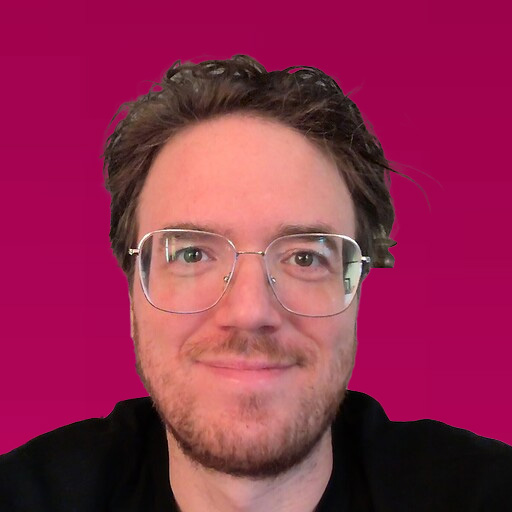
I've reviewed hundreds of laptops for Windows Central, and I have a clear idea of what makes a good system. When it comes to Copilot+ PCs, a mix of my own experience and the testing done by my colleagues helps me curate a perfect list of laptops.
How we test Copilot+ PCs at Windows Central
How we test laptops at Windows Central is more involved than you might imagine. Because our team of reviewers essentially adopts a PC during the review process, it's easy to determine its strong and weak points in everyday use.
Design and build quality are most apparent, and we examine carefully how everything lines up and note any weak points (especially in terms of hinge strength and chassis materials).
This naturally leads us to test the speakers, camera, ports, webcam, and security features, as well as the keyboard and touchpad.
It's then on to the display, where we use a colorimeter to measure brightness and color reproduction across the important color gamuts. We also analyze how well the display deals with glare and touch.
Finally, performance is carefully measured using a suite of benchmark tools. We run tests for the CPU, GPU, and storage; in the case of Copilot+ PCs, we add AI benchmarks to test the NPU.
Battery life is also taken into account. It's one thing to offer synthetic benchmark results for runtimes, but thanks to our laptop adoption method, we can also confidently give a real-world runtime.
We then take all of the individual scorecards from each section to deliver an overall star rating. Anything at four stars or more is considered recommendable, while the three-star range usually has some concessions. Anything at two stars or below is best left alone.
How to choose the best Copilot+ PC for you
Copilot+ PCs only entered the market in 2024, but they're already some of the most advertised Windows devices out there. They also happen to be some of the most affordable thanks to Qualcomm's Snapdragon X platform.
And while there were quite a few Snapdragon-powered Copilot+ PCs announced on May 20, 2024, the AI suite in Windows 11 has now been expanded to include Intel and AMD chips with an NPU of at least 40 TOPS.
At the top of my list is the Surface Laptop 7. Windows Central Senior Editor Zac Bowden said, "This is the best laptop. Period." in his review, and it's perfect for anyone who desires all-day battery life, snappy performance, and an outstanding combination of keyboard and haptic touchpad.
If you're keen on going with a lighter PC with not as much top-end performance, the ASUS Zenbook A14 should be considered.
Want a Copilot+ PC with an incredible OLED display, sleek design, and stellar performance? Lenovo's Yoga Slim 9i (Gen 10) remains the go-to option.
If it's a versatile Copilot+ you crave, I recommend first checking out HP's convertible OmniBook Ultra Flip 14 with Intel Core Ultra Series 2 chips. Want to get even more versatile? Microsoft's Surface Pro 11 2-in-1 with Snapdragon X SoCs is a beautiful PC.
Last but certainly not least is the ASUS Zenbook S 16 (UM5606) with up to an AMD Ryzen AI 9 HX 370 CPU. It provides some impressive power, and it's topped off with a 16-inch OLED display with 2880x1800 resolution and touch functionality.
Copilot+ PC: FAQ
I'm here to answer some of the most pressing questions when it comes to Copilot+ PCs and world of AI laptops.
What is a Copilot+ PC and how does it differ from an AI laptop?
Deciphering all the new terms surrounding 2025's laptop and PC landscape isn't always easy.
AI PCs containing a Neural Processing Unit (NPU) kicked things off in a big way, while Microsoft and Qualcomm took things to the next level with Copilot+ in 2024.
Copilot+ is an umbrella term for a set of advanced AI features in Windows 11, as well as laptops with the ability to run the features locally. The first wave of Copilot+ PCs were all powered by a Snapdragon X Elite or Snapdragon X Plus ARM64 SoC, but that's now changed to include Intel and AMD's latest hardware.
All Copilot+ PCs are technically AI PCs, though the reverse is not true. Some of the best AI laptops do not make the cut for Copilot+ due to not having an NPU with enough power.
The current benchmark set by Microsoft is an NPU with 40 TOPS of power, which all of the laptops I've included here can offer.
So why buy a Copilot+ PC? In many cases, it means you're getting your hands on Qualcomm's impressive ARM64 chips with strong performance and efficiency.
For many people, the Copilot+ perks — including things like Live Caption, advanced Windows Studio Effects, local image and text creation through Cocreator, and Windows Recall — will be secondary to design and performance appeal.
What to look for in a Copilot+ PC
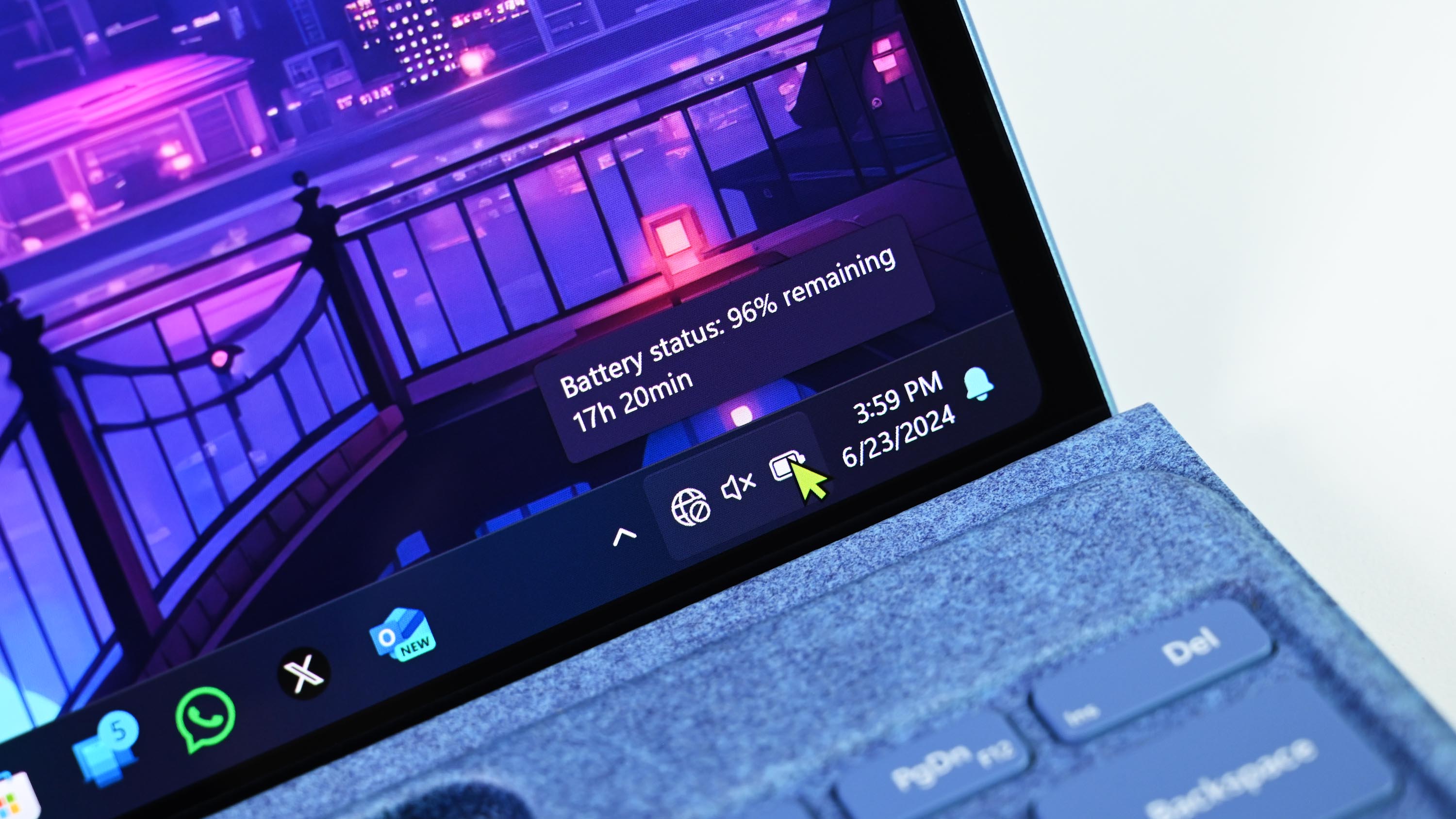
Copilot+ PCs are essentially just laptops with an NPU powerful enough to run Microsoft's built-in Windows AI tools.
The same general buying advice we always offer across laptops remains the same for Copilot+ PCs. You want a display that suits your workflow, you want enough performance to not be slowed down, and you want a build quality that won't go bust before you're ready to upgrade.
But you should focus more on battery life and performance in Copilot+ PCs. Qualcomm still seems to be the best option if you want the best efficiency-to-performance ratio, but the ARM64 architecture might not be for everyone.
If you don't want to deal with ARM emulation or worry about some specialized apps not working at all in Windows on Snapdragon, I suggest sticking with an Intel or AMD Copilot+ PC.
On the other hand, Qualcomm's Snapdragon X Plus chips are now showing up in more affordable devices, so the tradeoff in cost might be good enough that you give ARM a try.
Are Copilot+ PCs good for gaming?
The first run of ARM64 Copilot+ PCs featured Qualcomm's Snapdragon X Elite and X Plus SoCs equipped with an Adreno integrated GPU capable of up to 4.6 TFLOPs in the X1E-84 chip. To put that into perspective, the Xbox Series S is capable of 4 TFLOPs.
These numbers are really only a small part of a larger story. As covered by Senior Editor Richard Devine, Snapdragon X gaming compatibility and performance is likely "going to blow your mind." Will it rival a high-end gaming laptop's experience? No, but that's not what Copilot+ PCs are made for.
Nevertheless, with more than 1,300 compatible titles listed on the WorksOnWoA website and evidence of the X Elite being able to play Baldur's Gate 3 at a respectable level, most Copilot+ PCs should be able to accommodate some lighter gaming when the focus is off of AI and productivity.
One of the new Copilot+ features is Auto Super Resolution, a tool baked right into Windows 11. It's basically Microsoft's answer to NVIDIA DLSS, AMD FSR, and Intel XeSS, leveraging NPU power for real-time AI upscaling.
As for AMD and Intel Copilot+ PCs, both companies made great progress on their integrated graphics, and you should have no issues with some lighter gaming.
What new features are expected for Copilot+ PCs?
Copilot+ PCs bring features like Windows Recall, Live Captions, Auto Super Resolution, local AI text and image creation, advanced Windows Studio Effects, and more. If you want a great Windows laptop with cutting-edge AI features, long battery life, and excellent performance, a Copilot+ PC is the way to go.
These tools are just the start, and Microsoft announced new Copilot+ features on March 31, 2025.
Alongside the news that AMD and Intel systems now have access to Copilot+, Microsoft introduced Copilot+ Voice Access for Snapdragon X PCs (Intel and AMD support is expected later this year).
Voice Access is exactly what it sounds like, allowing you to speak natural commands to be processed entirely by the NPU inside.
All the latest news, reviews, and guides for Windows and Xbox diehards.

Cale Hunt brings to Windows Central more than nine years of experience writing about laptops, PCs, accessories, games, and beyond. If it runs Windows or in some way complements the hardware, there’s a good chance he knows about it, has written about it, or is already busy testing it.

